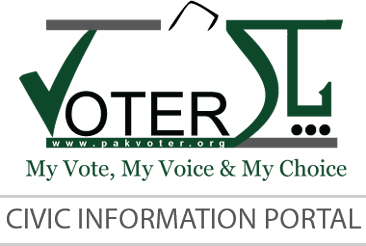Women in Pakistan constitute 48.76% of the population according to the 2017 census. Despite constituting a large number of the population, women still remain unheard and unseen. For instance, 12 million women are still missing from the electoral rolls and the General Election is just around the corner. To minimize the challenges and cope with the situation, the governments of different times have taken certain actions and steps in the form of affirmative measures or legislation. These include:
- The allocation of a quota for women in Parliament and the Provincial Assemblies.
- Reserved seats for women in the provinces’ local government systems.
- Women-specific provisions in the Elections Act, 2017.
- the allocation of a ten percent quota for women in the national civil service and other public jobs.
- The Criminal Law (Amendment) Act, 2004 regarding honour crimes.
- The Criminal Law (Amendment) Act, 2010 pertaining to sexual harassment.
- The Protection Against Harassment of Women at the Workplace Act, 2010.
Women’s political participation
Similarly, many such measures have been taken to encourage the public and political participation of women. One striking example of this is the recently passed Elections Act, 2017. Multiple sections of this act speak of women’s political participation as voters and candidates. Section 9 (1) of the Act gives the ECP powers to declare an election void if women are restrained from casting their votes. The law further explains that if the women voter turnout remains below ten percent, the ECP may presume that women were restrained from voting through a local agreement. Section 18(1) talks about reserved seats for women in Parliament as also mentioned in Article 51 of the Constitution. Section 47 stresses the need to take special measures to increase the enrollment of women voters. In section 206, the Act clearly states that political parties must give five percent of general seat tickets to women.
Reserved seats for women legislators
Women’s participation in the political sphere has also been ensured through their reserved seats in both houses of Parliament and the four Provincial Assemblies. The upper house of Parliament has 17 reserved seats for women. The province-wise break-up is shown below:
Women’s reserved seats in the Senate of Pakistan
| Balochistan | Federal Capital | Khyber Pakhtunkhwa | Punjab | Sindh | Total | |
| Women’s seats | 4 | 1 | 4 | 4 | 4 | 17 |
Similarly, the National Assembly of Pakistan has 60 reserved seats for women. The province-wise segregation of women’s seats in the National Assembly are shown below:
Women’s reserved seats in the National Assembly of Pakistan
| Balochistan | Khyber Pakhtunkhwa | Punjab | Sindh | Total | |
| Women’s seats | 4 | 10 | 32 | 14 | 60 |
Moreover, the Provincial Assemblies of the four provinces also have reserved seats for women. The legislature made this provision in the Constitution to ensure women’s participation in mainstream political systems in the provinces, as well. The table below shows women’s seats in all Provincial Assemblies.
Women’s reserved seats in the Provincial Assemblies
| Balochistan | Khyber Pakhtunkhwa | Punjab | Sindh | Total | |
| Women’s seats | 11 | 22* | 66 | 29 | 128 |
The 25th constitutional amendment has resulted in FATA’s merger with Khyber Pakhtunkhwa. The political side of this merger will be implemented after the 2018 election. Therefore, the number of KP seats in the table above do not include the seats that will be added after the FATA merger; including the FATA seats results in addition of four women’s seats in the KP assembly. Hence, the total number of women’s reserved seats in KP would rise to 26 and resultantly, the total number in all four provinces would also increase to 132.
Statement about 5% Women Candidates on General Seats
According to section 206 of the Elections Act 2017 the political parties are bound to issue 5% general seat tickets to the women. The ECP has issued on its website the statement showing number of male and female candidates of all the parties. This statement has been issued in pursuance of section 206 of the Elections Act 2017. The list can be seen by clicking this link
https://www.ecp.gov.pk/PrintDocument.aspx?PressId=55373&type=PDF


